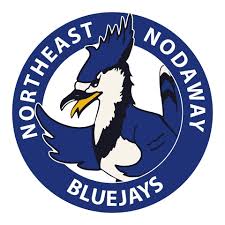Each blind or visually impaired student will receive instruction in Braille reading and writing as part of the student’s Individualized Education Program (IEP) or Individualized Family Support Plan (IFSP) unless the IEP or IFSP team determines, based on the student’s skills, needs and whether the student requires Braille instruction. If a student who is deaf or hard of hearing does not demonstrate progress in expressive and receptive language skills, as measured by one of the education tools or assessments selected by the Department of Elementary and Secondary Education (DESE) or by the existing instrument used to assess the development of students with disabilities under federal law, the student’s IEP or IFSP team will explain to the student’s parents/guardians the reasons the student is not progressing toward or meeting the language developmental milestones and will recommend strategies, services and programs that will be provided to assist with the student’s success toward English literacy.
No student will be denied instruction in Braille reading and writing solely because the student has some vision. During the evaluation process, consideration shall be given regarding appropriate Braille instruction based on a potential vision loss due to a degenerative medical diagnosis.
For purposes of this Policy/Regulation, the following terms and definitions are applicable:
- “Accessible assistive technology device,” an assistive technology device, as defined in 20 U.S.C. Section 55 1401, as amended, that provides blind or visually impaired students the benefits of an educational program in an equally effective and integrated manner as that provided to nondisabled students.
- “Adequate instruction,” the quality teaching of blind or visually impaired students, as it pertains to general education and necessary blindness skills, in alignment with the U.S. Department of Education's definition of free appropriate public education, as defined in 20 U.S.C. Section 1401, as amended.
- “Blind or visually impaired student”:
- A student who:
- Has an Individualized Education Program (IEP) or an Individualized Family Service Plan (IFSP), as such terms are defined in 20 U.S.C. Section 1401, as amended, or a 504-plan created under Section 504 of the Federal Rehabilitation Act of 1973, 29 U.S.C. Section 794, as amended; and
- Is identified as having the disability of “visual impairment (including blindness)” within the definition of “child with a disability” in 20 U.S.C. Section 1401, as amended; or
- An individual who is deaf-blind under the Federal Individuals with Disabilities Education Act (IDEA), as amended, or other federal law.
- “Braille”, the system of reading and writing through touch.
- “Expanded core curriculum,” a disability-specific curriculum that compensates for vision loss, is foundational to all other learning, and that covers the nine essential areas of compensatory access, sensory efficiency, assistive technology, orientation and mobility, social interaction, recreation and leisure, independent living, self-determination, and career education.
- “Grade level instruction,” instruction that aligns with state-designated content standards and curricula for students of the same age or level of maturity, based on the development of intellectual, emotional, physical, and behavioral capacity that is typical for the student's age or age group.
- “Local educational agency” or “LEA,” the same definition as in 20 U.S.C. Section 1401, as amended.
- “Nonvisual access,” the ability of a blind or visually impaired student to use all functions of a device, without using the student's vision, in an equally effective, equally integrated manner and with equivalent ease of use as the student's sighted peers.
- “Nonvisual skills,” skills that are taught in such a way that the student does not need to use any vision.
- “State educational agency,” the same definition as in 20 U.S.C. Section 1401, as amended.

